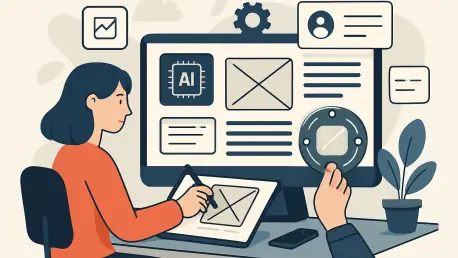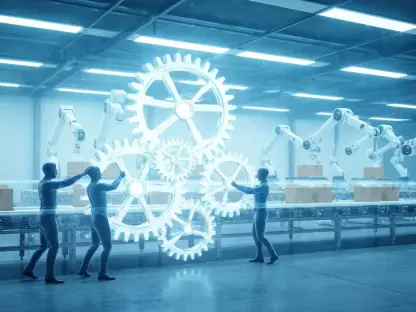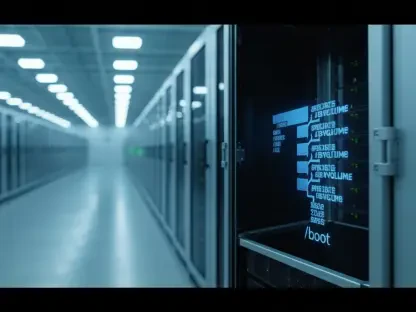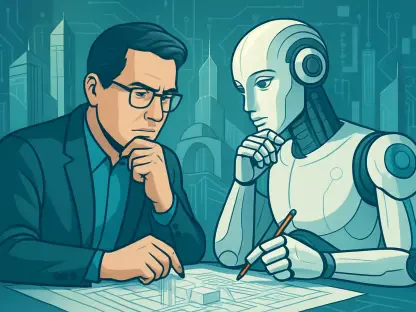Today, we’re thrilled to sit down with Vijay Raina, a renowned expert in enterprise SaaS technology and a thought leader in software design and architecture. With his deep expertise in integrating cutting-edge tools into complex workflows, Vijay offers unique insights into how Artificial Intelligence (AI) is reshaping the field of User Experience (UX) design. In this conversation, we dive into the practical realities of AI-augmented design processes, exploring how designers can leverage AI as a creative partner, navigate its limitations, and maintain a human-centered approach in an increasingly automated world. Let’s uncover the challenges, surprises, and transformative potential of blending AI with design.
How did your perspective on AI in design evolve when you first started experimenting with it in your workflow?
When I first started exploring AI in design, I was equal parts curious and skeptical. The hype was everywhere, but I wasn’t sure how it would fit into the nuanced, human-driven world of UX. My initial experiments were clumsy—I tried some basic prompts and plugins, but it felt like a gimmick rather than a game-changer. Over time, though, I began to see its potential as I learned to frame better questions and set clear boundaries for what AI could and couldn’t do. It wasn’t about replacing my skills but amplifying them, especially for tasks like synthesizing data or generating ideas to riff on. That shift in mindset—from seeing AI as a threat to viewing it as a collaborator—was a turning point.
What motivated you to integrate AI into a high-pressure environment like a design sprint?
Honestly, it came down to necessity and curiosity. Design sprints are intense—you’ve got tight deadlines and a mountain of work, from understanding user needs to prototyping solutions. I was looking for ways to streamline repetitive tasks like summarizing feedback or brainstorming initial concepts, which often eat up precious time. I also felt this pull to experiment because the industry was buzzing with AI success stories. I didn’t want to fall behind, but more importantly, I wanted to test if AI could actually help me focus on the strategic, human aspects of design rather than getting bogged down in the grunt work.
Can you walk us through how AI changed your approach to synthesizing user feedback during the early stages of a project?
Absolutely. Normally, I’d spend days manually combing through user interviews, surveys, and app reviews, trying to spot patterns while fighting off brain fog. When I started using AI for this, it was a revelation—it could summarize huge chunks of data in minutes. For instance, I’d feed it raw feedback and ask for key pain points around a specific user group, like Gen Z’s financial literacy challenges. The speed was incredible, though I quickly learned I had to double-check outputs because AI sometimes threw in wild, made-up ideas. I adapted by refining my prompts to constrain AI to the data I provided and always verifying the results against the source material. It saved time, but I still had to bring my critical thinking to the table to ensure the insights were grounded.
What was it like using AI as a creative partner during brainstorming or sketching phases?
It was both exciting and a bit surreal. I’d ask AI for inspiration, like UX patterns from various industries to tackle user anxiety, and it would spit out ideas faster than I could process them. Some concepts were surprisingly fresh—like gamified progress bars to build confidence—and sparked directions I wouldn’t have considered on my own. But I had to stay sharp because not all suggestions were practical or aligned with user needs. It felt like jamming with a teammate who’s full of raw ideas but lacks context. I balanced it by sketching my own concepts first, then using AI to remix or expand them. It pushed my creativity, but I had to steer the ship to keep the ideas relevant and human-centered.
How did AI perform when it came to critiquing design concepts or helping narrow down options?
AI was useful but limited in this area. When I uploaded design concepts for feedback, it did a decent job of listing strengths and weaknesses—sometimes catching blind spots like potential privacy issues I hadn’t flagged. However, it struggled to prioritize or make nuanced trade-offs the way a human team would. It often gave me a laundry list of pros and cons without a clear sense of what mattered most. I found myself stepping back to rely on my instincts and user data to make the final call. AI was more of a sounding board than a decision-maker—it gave me perspectives to chew on, but the real judgment had to come from me.
What surprised you most about using AI tools to build prototypes in your workflow?
The speed and interactivity blew me away. I experimented with tools that could turn storyboards into functional prototypes almost instantly—complete with animations and clickable flows. It was like magic to see a rough idea come to life without hours of manual design work. But it wasn’t perfect; sometimes the output was incomplete or had glitches, like missing navigation elements. What surprised me most was how it shifted my role—I became more of a curator, tweaking AI-generated designs rather than building from scratch. It saved time, but I had to stay hands-on to ensure the prototype matched the user experience I envisioned.
How did working with AI during user testing influence your understanding of its role in design?
User testing with AI was a mixed bag. On one hand, it was incredibly helpful for summarizing test transcripts and spotting recurring themes across sessions—tasks that would’ve taken hours otherwise. On the other hand, I got a stark reminder of why real human feedback is irreplaceable. I tried simulating user reactions with AI, and while the output looked convincing at first, it lacked the depth and unpredictability of actual user behavior. Plus, AI occasionally slipped in assumptions that weren’t grounded in the data. It reinforced that AI can support logistics, but empathy and observation during testing are skills only a designer can bring. It’s a tool, not a substitute for connecting with real people.
What challenges did you face in maintaining a human-centered focus while leveraging AI in your design process?
The biggest challenge was not letting AI’s speed and polished outputs overshadow the messy, human side of design. It’s tempting to accept AI’s summaries or ideas at face value because they sound so confident, but I had to keep asking: Does this truly reflect what users feel? I caught myself over-relying on AI early on, especially during tight deadlines, and had to consciously step back to prioritize empathy and curiosity. Another hurdle was managing AI’s tendency to “hallucinate” or invent information—I had to build a habit of constant verification. Staying human-centered meant using AI as a starting point, not the final word, and always circling back to real user voices and my own judgment.
What’s your forecast for the future of AI in UX design over the next few years?
I think AI in UX design is going to become even more seamless and specialized over the next few years. We’ll see tools tailored specifically for design tasks—think AI that not only generates prototypes but also predicts user friction points based on behavioral data. However, the core of design will remain human. AI will handle more of the repetitive, data-heavy lifting, freeing designers to focus on strategy, empathy, and innovation. The challenge will be ethical—ensuring transparency, avoiding bias in AI outputs, and maintaining user trust. I foresee designers becoming orchestrators, blending AI’s efficiency with human insight to create experiences that are both scalable and deeply personal. It’s an exciting space, but it’ll require us to stay vigilant and keep asking the tough questions about responsibility and impact.









